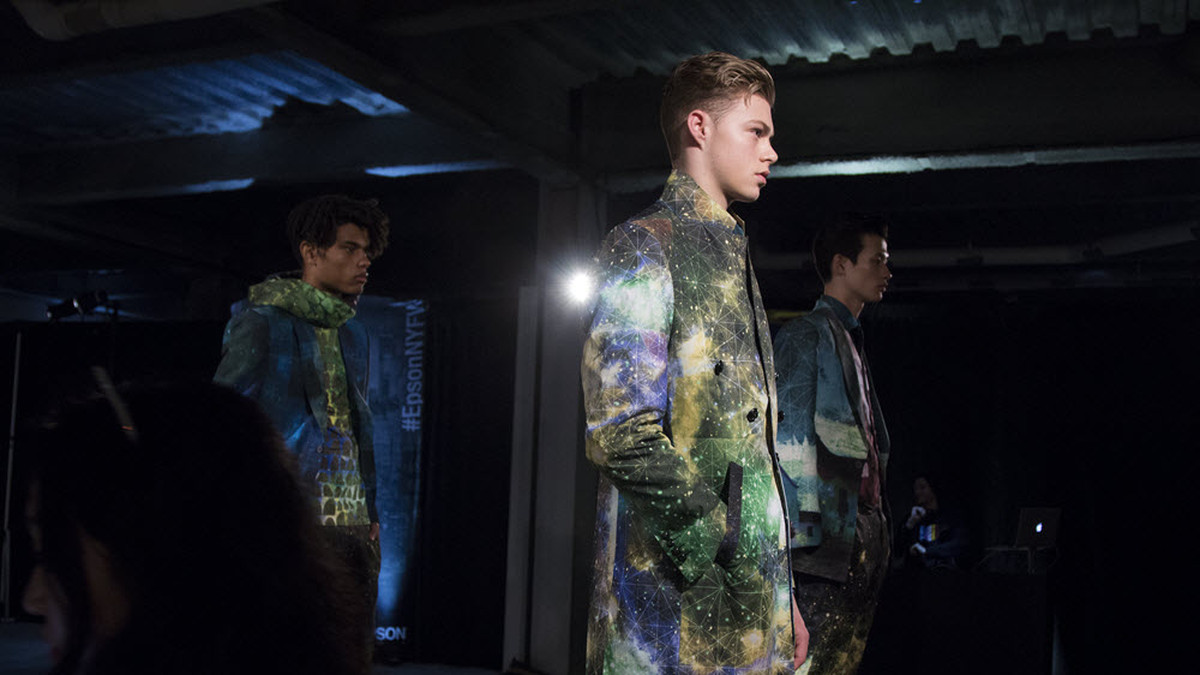Digital printing has reshaped every industry it has touched. Few fields have been as dramatically transformed as the fashion world, where digital fabric printing opens up new avenues for creativity, faster production, and taking designers’ ideas from concept to garment in record time.
Ink World Magazine reports that textile printing is a $7.5 billion industry and is projected to grow 34% annually worldwide. Digital fabric printing alone will grow 25% per year until at least 2019. The world is in an “Age of Fast Fashion,” meaning trends and seasons move more rapidly than ever before — and designers need to keep pace. Digital printing of fabrics allows designers to ideate, create truly unique and exclusive end products and get collections into the market faster.
Digital fabric printing is changing fashion business models
Forbes describes the pace of today’s fashion industry as “see-now, buy-now.” The days of spending months preparing for one annual fashion show and then riding that collection’s wave are long over. As soon as new items hit the runway, consumers see them on Instagram, following real-time online fashion coverage, and snap up items they love. Buyers want to see items on the runway and immediately add their favorites to their own wardrobes.
Shorter cycles between collections also demand increased agility. Retail seasons are briefer; and at the same time, designers are exploring options for short-run and exclusive collections for different trends, events and partners. Digital printing is one technology that’s helping speed up the production process. Instead of chasing trends, designers can focus on creating them.
As Forbes reports, “Part of the reason for that increased uptake comes down to market forces. In the first instance, the fashion industry is going through an evolution (revolution even) in terms of how it gets product from the runway during fashion week to stores and ultimately customers’ wardrobes, quicker than ever.”
How digital printing works for fabrics
Digital printing on fabric has become a reality thanks to a dye sublimation technology. Dye sublimation is, itself, a fascinating process. Using a suspended dye that transforms its state from solid to gaseous, prints are first created on a special transfer paper. The transfer paper is placed on the fabric, then heat and pressure are applied and the image transfers from the paper to the fabric. Images can be printed on virtually any fabric, from polyester to silk.
Fashion companies exploring digital fabric printing point to several potential benefits:
Faster production timelines: Traditional screen-printing can take eight weeks — and require beginning over if the end result isn’t perfect. Digital inkjet printing provides nearly instant production on the same cloth.
Unlimited colors, visual integrity: Moving to digital printing has freed designers from previous limitations of physical dying and screening. Digital printing provides access to an unlimited range of colors and designs, rendered at high fidelity and visual clarity.
Environmentally friendly: Conscious fashion professionals are always looking for ways to make their industry more sustainable. Not only does digital printing cut the amount of wasted fabrics, but digital fabric printing can help reduce water use by up to 90 percent and electrical usage by up to 30 percent when compared to traditional methods of fabric printing.
Scalable strategies: Designers and manufacturers are increasingly looking for solutions that allow them to produce shorter runs and smaller collections. With digital printing, it’s not necessary to produce tens of thousands of garments. Instead, designers can create a few hundred pieces and then vary colors or move on to producing something completely different.
Embracing customization: The success of brands such as Indichino and eShakti are just the tip of the iceberg in the demand for customization. Today’s buyers, especially younger audiences, want to co-create and customize items from the brands they love. With digital printing, cost-effective personalization is a reality.
Where digital printing and fashion go from here
The potential for digital printing and fashion goes far beyond expanded creativity, faster production and cost-effective business models for designers. Printed fabrics will include technology printed into the fabric to enable data collection and customer experiences. It will be easier to integrate with AI tools for more customized sizing. And with continued advances in digital fabric printing, new waves of innovation and design will continue to reshape how consumers think about and experience the fashion industry.
Explore Epson to learn more about the benefits of digital fabric printing.
